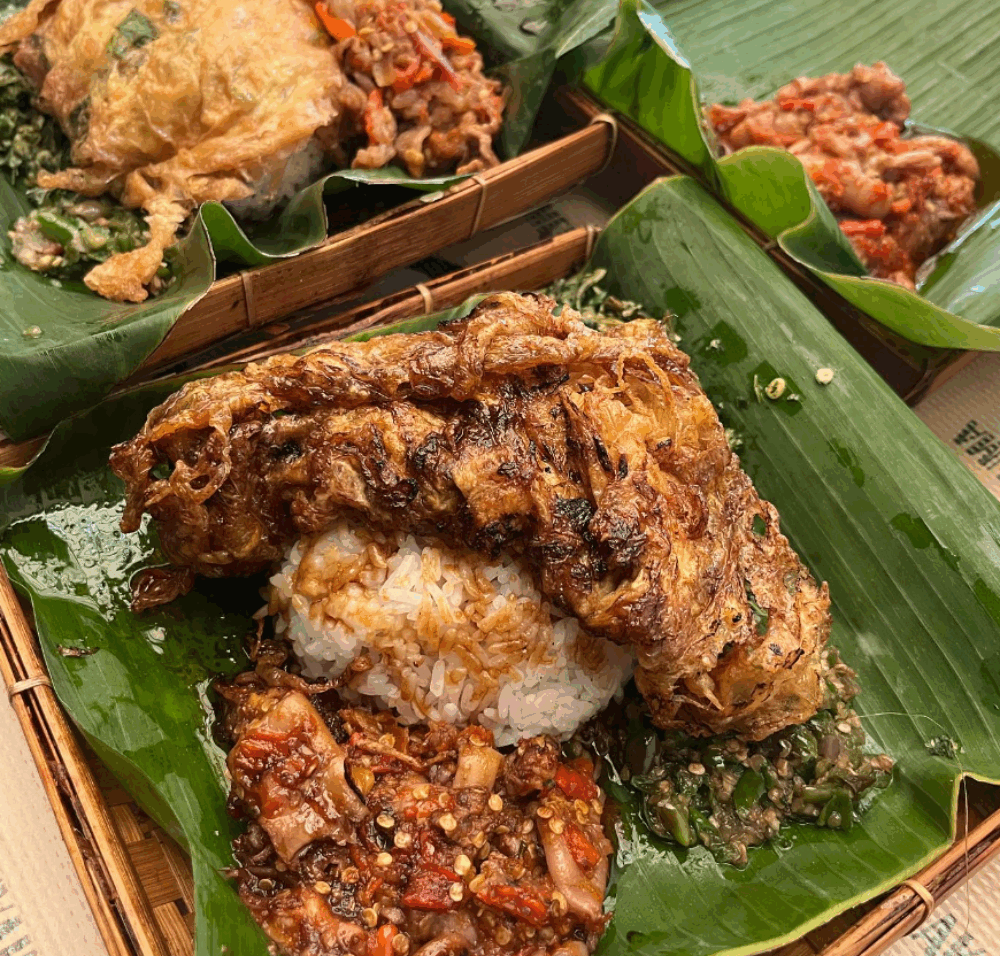The Essence of Dadar Beredar Bali
Dadar Beredar, a traditional Balinese dessert, embodies the rich tapestry of Indonesian culture. This sweet treat is not just a culinary delight but encapsulates the spiritual and communal identity of the Balinese people. Often enjoyed during festive occasions, Dadar Beredar is made primarily with rice flour, coconut, palm sugar, and an array of vibrant natural flavors. Each bite tells a story of the island’s heritage and dedication to preserving age-old traditions.
Ingredients and Preparation
Rice Flour Base
The foundation of Dadar Beredar is made from rice flour, which is a staple in Indonesian cuisine. The flour is mixed with water to create a smooth batter. Using quality rice flour is crucial; it should have a fine texture for the crepes to be soft, pliable, and easy to fill. Traditional recipes often call for a specific type of rice flour—generally, a fine grade that contributes to the crepe’s delicate nature.
Coconut and Sweetness
Coconut is a significant ingredient in Dadar Beredar. Grated fresh coconut meat, mixed with a small amount of salt, creates a perfect balance of flavors, enhancing the overall sweetness of the dish. The natural sweetness of palm sugar or “gula merah” is another critical component. This unrefined sugar is not only sweet but imparts a rich caramel-like flavor that elevates the dessert’s taste profile.
Colorful Natural Flavors
One of the distinct features of Dadar Beredar is its vibrant colors, achieved through natural flavoring agents. Commonly used natural dyes come from pandan leaves, which provide a beautiful green color and a fragrant aroma. Other colors can derive from ingredients like butterfly pea flowers for blue or beetroot for a bright red hue. Each color represents a different flavor, making Dadar Beredar a visually appealing and diverse dish.
The Cooking Process
To prepare Dadar Beredar, the rice flour batter is poured into a lightly greased flat pan or skillet. It is spread thinly and cooked on medium heat until set. Once the crepes are light and pliable, they’re filled with a mixture of sweetened grated coconut and palm sugar. The crepes are then carefully rolled or folded to encase the filling properly. This method of preparation not only ensures a delightful combination of textures but also highlights the skill involved in crafting this dessert.
Cultural Significance
Festivities and Rituals
In Bali, Dadar Beredar is not just dessert; it’s often served during various rituals and celebrations. Be it a wedding, a religious ceremony, or a festival, this dish signifies hospitality and is presented with immense pride. The preparation and sharing of Dadar Beredar serve as a communal activity, often involving family members and local communities, reinforcing familial bonds and local traditions.
Symbol of Gratitude
The act of making Dadar Beredar goes beyond its delicious taste. It symbolizes gratitude and respect toward one’s ancestors and the divine. Many Balinese believe that the natural ingredients used in Dadar Beredar carry blessings, and serving these delicacies is a form of reverence. This tradition emphasizes the importance of gratitude in Balinese culture, reflecting a core belief in the interconnectedness of life and spirituality.
Health Aspects
While considered a treat, Dadar Beredar’s ingredients offer several health benefits. Coconut provides healthy fats and minerals, while palm sugar contains essential nutrients like zinc and iron, making it a more wholesome alternative to refined sugar. Additionally, the use of natural dyes and flavors means that the dessert is free from artificial additives, aligning with the increasingly popular trend of clean eating.
Variations of Dadar Beredar
Regional Adaptations
Across Indonesia, different regions have their own versions of Dadar Beredar, showcasing local flavors and ingredients. For instance, in Java, a version called Dadar Gulung features green coloring, often flavored with pandan, while in Sumatra, one might find a sweeter, creamier filling. Each version has its unique twist while maintaining the core essence of being a rolled crepe dessert.
Modern Interpretations
In recent years, modern culinary innovations have led to creative variations of traditional Dadar Beredar. Chefs are incorporating novel ingredients like chocolate, fruit purees, or infused syrups, appealing to contemporary tastes while respecting authentic recipes. This evolution helps introduce Dadar Beredar to wider audiences, fostering greater appreciation for Balinese culinary arts.
Serving Suggestions
Dadar Beredar can be garnished with toppings like grated coconut, a drizzle of palm sugar syrup, or fresh fruits to enhance its flavor. It’s often enjoyed with a cup of Balinese coffee or tea, creating a perfectly balanced sweet treat experience. Whether served warm or at room temperature, each presentation can heighten its appeal, especially during community gatherings or special occasions.
Conclusion
As an emblem of Balinese culture, Dadar Beredar is more than just a dessert; it is a symbol of tradition, community, and spirituality. Each component, from its ingredients to its preparation, is deeply interwoven with the Balinese way of life. The dessert showcases not only the culinary skills of the island’s people but also their commitment to celebrating and preserving their culture for future generations. The rich flavors and colorful presentation of Dadar Beredar make it not only a must-try for visitors but also a dish that continues to thrive in the heart of Bali’s cultural heritage.

